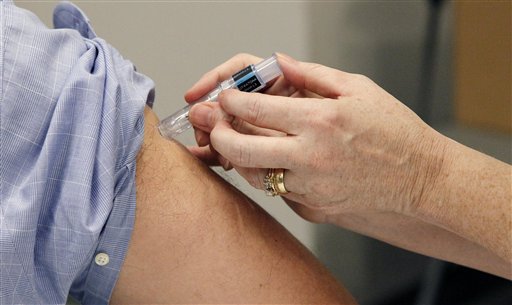High Dose Flu Shot for Older Americans
If you are contemplating a flu shot this year you have an unprecedented number of options to choose from. “There’s something for everyone this year,” said CDC’s Dr. Anne Schuchat.
There is the regular shot; a high-dose shot just for those 65 and older; and a tiny-needle shot for the squeamish. The bigger change: A small number of the regular flu shots, and all of the FluMist nasal vaccine, will protect against four strains of influenza rather than the traditional three.
A severe flu strain swept the country last winter, sparking a scramble for last-minute vaccinations. There’s no way to predict if this year will be as bad. But it takes about two weeks for the vaccine to take effect, so health officials say early fall — before flu begins spreading widely — is the best time to start immunizations.
“Now is the time to get vaccinated,” said Dr. Paul Biddinger of Massachusetts General Hospital in Boston. “Don’t wait until it’s in your community.”
Boston declared a public health emergency last January when hospitals were filled with flu patients, and Biddinger said he treated many who openly regretted not having been vaccinated.
January and February typically are the peak flu months in the U.S. But small numbers of flu cases circulate for much of the year, and Biddinger said a couple of people have been hospitalized already.
“That first cough or fever is not the time to think about influenza vaccine,” Schuchat said.
Flu vaccine is recommended for nearly everyone ages 6 months and older. Flu is particularly risky for seniors, children, pregnant women and people of any age with asthma, heart disease and other chronic diseases.
Two-thirds of adults 65 and older were vaccinated last year
It’s not clear why. But “there are no good reasons to skip the influenza vaccine,” said Dr. William Schaffner of Vanderbilt University and past president of the National Foundation for Infectious Diseases.
The flu shot cannot give anyone the flu, he stressed. But while it’s estimated to cut by about 60 percent the chances of getting the flu, Schaffner said it’s “a good vaccine, but it’s not a perfect vaccine.”
How to choose among the vaccine options, including the new four-strain version? The CDC doesn’t recommend one type of flu vaccine over another. All flu vaccine protects against two strains of Type A flu, typically the most severe kind, and one strain of Type B. The new so-called quadrivalent versions protect against two Type B strains.
Category: Articles, Senior Health




































